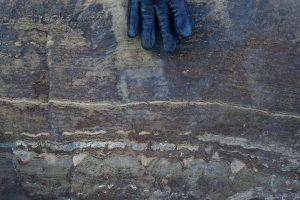Maya Wei-Haas in National Geographic:
 In 2016, a series of unassuming stone shapes rocked the paleobiology world when they were declared the earliest fossilized life yet found. Standing up to 1.6 inches tall, the triangular forms line up like a string of inverted flags in an outcrop on the southwest coast of Greenland that dates back 3.7 billion years.
In 2016, a series of unassuming stone shapes rocked the paleobiology world when they were declared the earliest fossilized life yet found. Standing up to 1.6 inches tall, the triangular forms line up like a string of inverted flags in an outcrop on the southwest coast of Greenland that dates back 3.7 billion years.
“If these are really the figurative tombstones of our earliest ancestors, the implications are staggering,” NASA astrobiologist Abigail Allwood wrote in a review article that accompanied the Nature study announcing the find. The microbes that made these fossils are over 200 million years older than the most widely accepted evidence of fossil life and would have lived a geologic blink of an eye after astroids had blasted Earth’s early surface. Evidence of critters from this time would suggest that “life is not a fussy, reluctant, and unlikely thing,” Allwood wrote. “Give life half an opportunity, and it’ll run with it.”
But even as Allwood penned these words, she had a nagging sense that something was amiss.
More here.
